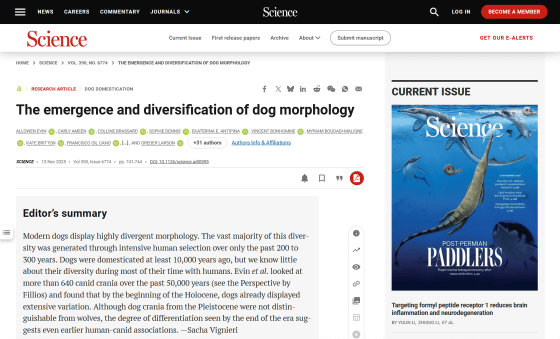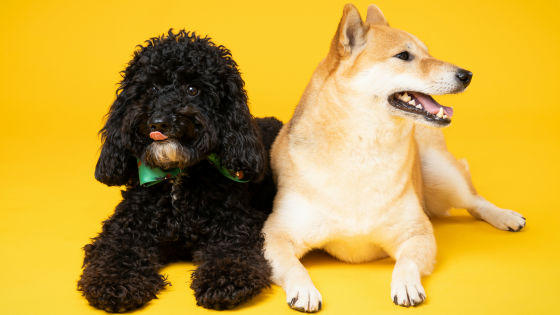It is clear that dog diversity began to increase thousands of years ago during the period of breeding

Today, there are a wide variety of dog breeds, including Shiba Inu, Pomeranians, Dachshunds, Pugs, and Golden Retrievers, and it was previously thought that many of these were the result of selective breeding in the 18th and 19th centuries. However, a new study examining the skulls of dogs and their wolf ancestors over the past 50,000 years has revealed that dog diversification began much earlier than previously thought.
The emergence and diversification of dog morphology | Science

Extensive dog diversity millennia before modern breeding practices - University of Exeter News
https://news.exeter.ac.uk/faculty-of-humanities-arts-and-social-sciences/archaeology-and-history/extensive-dog-diversity-millennia-before-modern-breeding-practices/
Doggie diversity in size and shape began at least 11,000 years ago | Reuters
https://www.reuters.com/lifestyle/doggie-diversity-size-shape-began-least-11000-years-ago-2025-11-13/
Dogs originally emerged from wolves domesticated by humans, but today they are divided into a wide variety of dog breeds with significant morphological differences. Since ancient times, dogs have been used for a wide range of work and as pets, but in the 18th century, dog shows began among the wealthy in Europe , and in the 19th century, this boom spread to the common people. This led to an acceleration of selective breeding, which is said to have given rise to much of the diversity of dogs we see today. However, it was not clear when the morphological diversity of dogs actually began to expand.
Therefore, an international research team including the French National Center for Scientific Research (CNRS) and the University of Exeter in the UK analyzed 643 skulls of dogs and wolves over the past 50,000 years to examine how the size and shape of the skulls have changed.
The 643 skulls analyzed included 158 modern dogs, 86 modern wolves, 281 ancient dogs, and 118 ancient wolves. The international team of archaeologists, curators, and biologists from more than 40 institutions created 3D models of the skulls and used a technique called geometric morphometrics to characterize their size and shape.
Below are photos of the canine skulls used in this study.

by C. Ameen(University of Exeter)
The analysis revealed that a skull dating back approximately 11,000 years, excavated from a Russian archaeological site, clearly shows the morphology of a domestic dog. It also revealed that early dogs with skull shapes similar to domestic dogs existed in the Americas approximately 8,500 years ago and in Asia approximately 7,500 years ago. Co-author of the paper, Dr. Carly Ameen, a bioarchaeologist at the University of Exeter, said, 'During the process of domestication, dog skulls became shorter and wider than those of wolves.'
Furthermore, the study showed that various morphological changes occurred relatively rapidly after the appearance of the first individuals with skull shapes characteristic of domestic dogs. A reduction in the size of dog skulls was first observed between 9,700 and 8,700 years ago, with an increase in size variation observed from 7,700 years ago. The increase in skull shape variation began approximately 8,200 years ago.
'Modern dogs exhibit more extreme morphologies, such as the single-headed bulldog and the long-headed borzoi, which are not found in early archaeological specimens,' said Dr. Aloyne Evin of the CNRS, co-first author of the paper. 'However, even as early as
The results of this study suggest that dog diversity arose much earlier than previously thought, but also highlight the difficulty of tracing the origins of the earliest dogs, as none of the Late Pleistocene specimens contained skull evidence of the wolf-to-dog domestication process.
Co-author Professor Gregor Larson of the University of Oxford said: 'The early stages of dog domestication are still unknown and the first dogs continue to elude us to this day. However, we can now show with confidence that once they emerged, dogs diversified rapidly, with their early mutations reflecting both natural ecological pressures and the profound effects of living alongside humans.'

'These findings highlight the deep history of our relationship with dogs,' said Ameen. 'Canine diversity is not just the product of Victorian breeders, but the legacy of thousands of years of co-evolution with human societies.'
Related Posts:







